“Willie” — a man he never knew — inspired Brandon “Nosey” Marshall to become a graffiti artist. Marshall was 8 years old when his brother showed him graffiti on drainage ditch walls behind their East Memphis home. “It wasn’t artistic,” he says. “It was straight-up vandalism. But that stuck with me.”
Most of the graffiti was done by one man. “It was just his name — and curse words and things. ‘Willie.’ I saw his name all over the neighborhood. Lamp posts, dumpsters, alleyways. It was probably just some teenage kid. I never met him. I never knew who he was.
“But after we saw that,” he says, “me and the neighborhood kids were like, ‘Oh, we can do it, too.’ And somebody would get ahold of half a can of spray paint from their dad’s garage, and we’d go down and just mess around. Everyone wrote their name. And cartoons.”
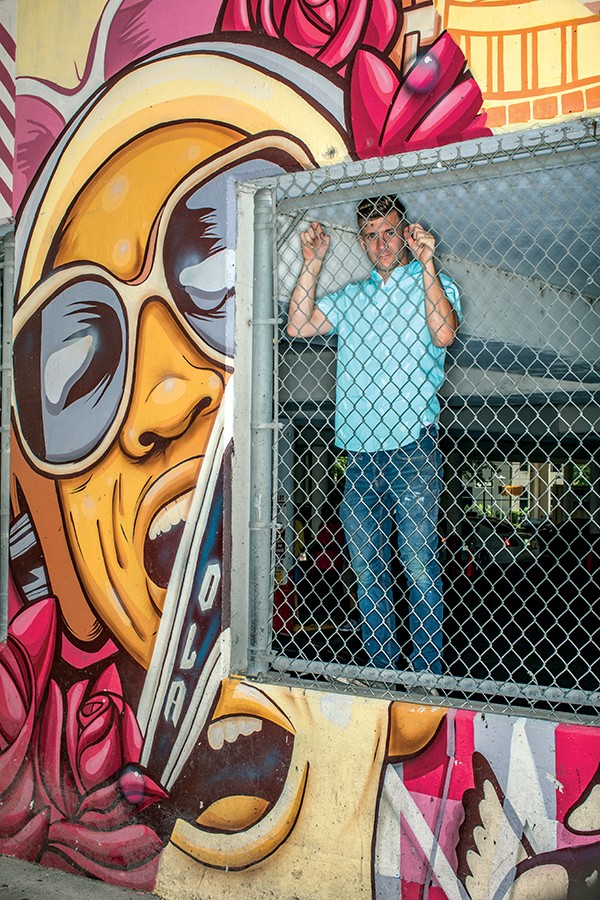 Photographs by Justin Fox Burks
Photographs by Justin Fox Burks
Brandon “Nosey” Marshall
Marshall has never stopped painting, but he’s no longer doing much sneaking around. He’s painted hundreds of Memphis signs and murals, including the “I Love Memphis” mural at Cooper and Young and the mural with the “Memphis American vibe” in the alley in front of the Rendezvous. “I think I own more square feet of wall space in this town — illegally and legally — than anyone else.”
He currently is exhibiting his paintings and collages at Soul Owner gallery. “I’m in a weird in-between space. I’m fine-tuning my brush work and learning how to paint smaller so I can continue my studio practice and not just spray paint.”
Now living in Detroit, Marshall, who gets high-dollar commissions to do murals for Nike and other companies, travels to Memphis several times a year to paint. His murals can be found from Denver to Melbourne, Australia.
“I remember when there wasn’t anybody else doing this,” he says. “And for years, I had to go speak and educate people and convince people why this was a good idea to let me paint murals. Now I see articles that the city powers that be push out, and they’re like, ‘Come visit Memphis, the city of murals.'”
A native Memphian, now 32 years old, Marshall began painting as a child. “My grandfather bought us some watercolor sets. The cheap ones. One of my earliest memories is him putting newspaper on the kitchen table and setting us up with these brushes. I remember doing that and just spreading the paint around.”
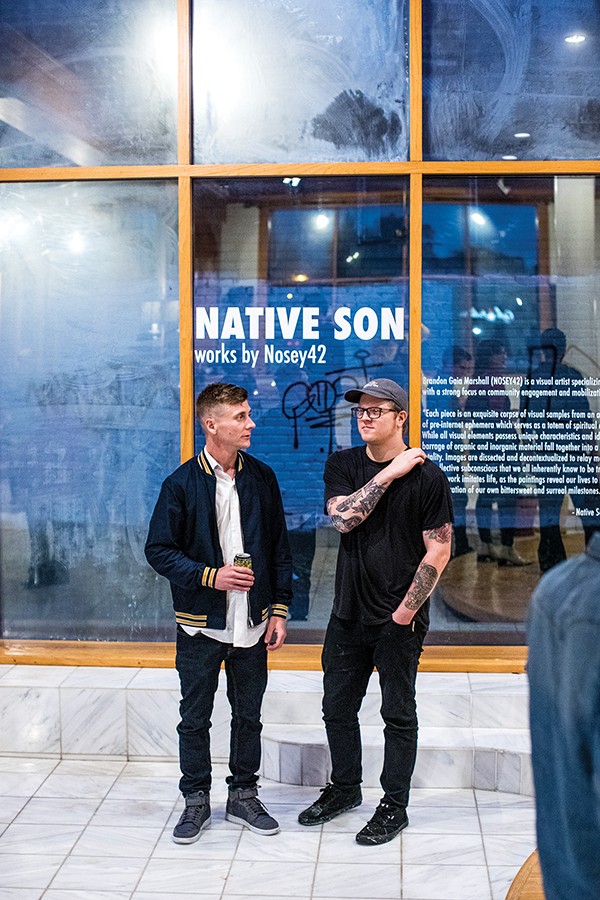
“Native Son” showcases the work of muralist and graffiti artist Brandon “Nosey” Marshall.
Watercolors gave way to spray paint when Marshall discovered Willie’s work. “We would steal cigarettes and go spray paint in the ditch. We were just really destructive kids.” Marshall’s signature piece was “big eyes and a big nose and a smiley face.”
“I wasn’t taking it seriously,” he says. “I was a little kid. It was an activity. Like playing pickup basketball or something. We were just passing the time.”
Marshall had a rough transition going into Christian Brothers High School. “I had really bad acne and couldn’t get a date and couldn’t make a sports team,” he says. He got his nickname after he joined a break-dancing club and began making friends. “I was always trying not to say anything stupid. I was always quiet and just kind of in the corner listening to everyone. And they were like, ‘Oh, he’s nosy.’ They gave me that name, and I just kept it.
“I was painting in the ditch for a few years and then, as soon as I started meeting older graffiti writers who were well out of high school and selling weed, I was like, ‘Oh, man, this is really cool.’ At Christian Brothers, these guys would pick me up on Friday, and I would ride off with them. And then they would drop me back off at my house on Sunday night.
“That was everything I was living for,” Marshall continues, “to make it to the weekend so I could go spray paint with these guys who I thought were so cool. We were painting trains in different train yards. We were painting on the highways. We were painting public places, too.”
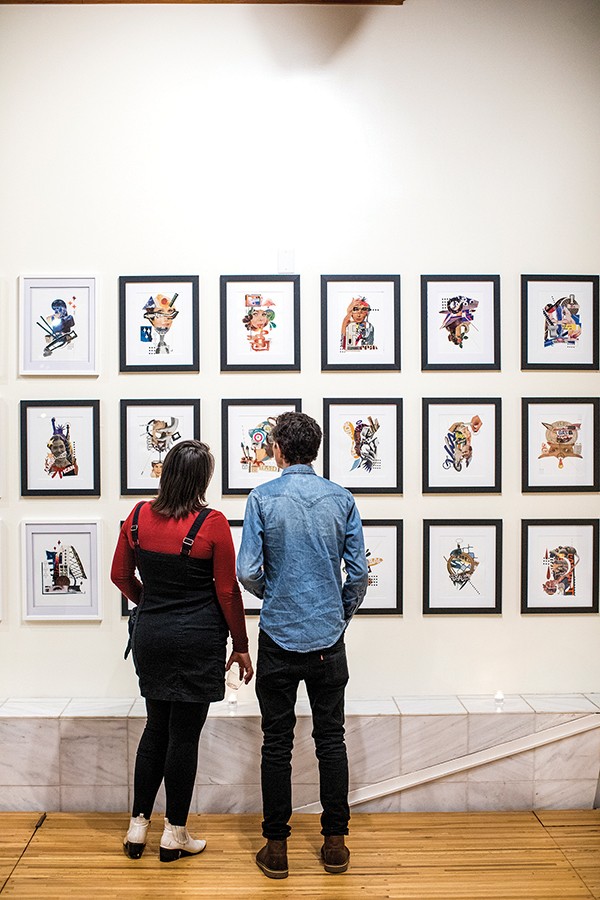
People noticed them painting on interstate overpasses, but, he says, “Most people are just driving. They’re not really looking around. Sometimes cops see you, and sometimes you run. But I was always of the impression that I want to get away more than they want to chase me.”
Marshall didn’t yet have his own style. “I was just trying to understand how to use spray paint,” he says. “We were the first generation of native Memphians actively trying to participate in that subculture of graffiti.” He signed his work “Nosy” (originally without an “e”) for a couple of years before he had a “word epiphany” after making his signature on a pay phone. He realized “nosy” stood for “no see — no one sees you.”
Marshall majored in art at the University of Memphis, but he dropped out after one semester. “I hated explaining my art,” he says.
In addition to painting letters, Marshall also was creating “mostly cartoony illustrations. I was referencing things, too. I would go to the Memphis Public Library and take out books on Ralph Steadman and different illustrators who I liked and try to understand how they were coming up with characters.”
Marshall and his friends sometimes got permission to paint a building. “If you ask a building owner if you can paint their building and you have permission, you’re painting a mural. ‘Graffiti’ means you do not have permission.”
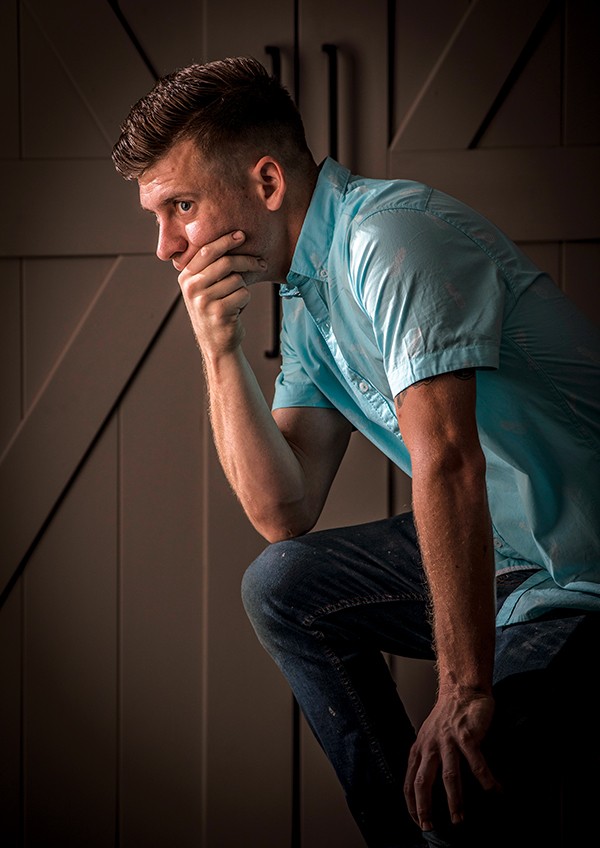
“I think I own more square feet of wall space in this town than anyone.”
One of Marshall’s earliest murals was the sign at Wild Bill’s with saloon lettering and a portrait “based on a really bad reference photo” of owner William Storey. “I listened to music, and they fed me some food. I made $100, and I did my favorite thing. It was the genesis of me thinking, ‘How can I monetize this?'”
That led to more work. “I was getting little odd jobs painting people’s vans or trucks … jobs off Craigslist at 18, 19 [years old] painting people’s garages.”
He used various lettering styles. “There is a Tennessee style, and I try to do that. It’s very big and gestural and menacing. It looks mean, with sharp points.
“In Memphis all of us were very broke, so we used a lot of bucket paint. It’s a little more sloppy. But there are things that you can’t do with spray paint that you can do with bucket paint and a roller. You can make things taper off and get long, clean edges.”
When he was 21, Marshall moved to Olive Branch, Mississippi, to take care of his grandfather, who had Parkinson’s and dementia and was “going downhill.” Marshall’s life wasn’t going well, either. “Between him dying and me being in this long relationship that fell apart and friends going down scary paths — it’s the South, and I became religious.” He never stopped “painting illegally” during his religious phase. “I was like, ‘Well, maybe these guys won’t understand it, but this is just who I am, and this is what I do. I’m not going to stop doing that for God or man.'”
Marshall’s religious phase ended after he began dating a woman he met while he was teaching Bible study at a community center. They eventually married. He applied and got a grant to paint a mural for a new UrbanArt Commission program. “The budget was $30,000 for these murals, which is more money than I’d ever seen,” he says.
Marshall painted a white family and a black family in a mural that still survives at Greenlaw Community Center. “We painted Martin Luther King. And Jesse Owens, because it was an athletic center.”
He used his grant money to pay his taxes and buy a 1992 Toyota truck and a house in Orange Mound. “I was like, ‘I’m going to paint every day. I’m not going to have a job. I’m just going to survive, and something will happen.’ I knew in my heart I could do this, but I’d never heard of anyone who [called themselves] a full-time muralist.”
Marshall began teaching others how to paint murals and graffiti lettering. “It got to the point where I mentored two or three generations of kids under me.” He threw his first Soul Food graffiti art festival in 2005. “It was just about getting everybody together to paint a big mural. And we would get permission, generally.”
He opened his home to the artists. If someone wanted to come to Memphis to paint, Marshall says, “They pretty much had a place to crash and someone to show [them] around. I’ve been an ambassador for Memphis graffiti art from the earliest days.” The only Soul Food mural that still exists is a “mostly abstract typography” on one of the Chelsea flood walls.
Marshall often left for weeks to paint in other cities. “Nashville, Atlanta. I was riding the Greyhound bus everywhere. I rode it all through Texas out to California. Anywhere I would get invited, I would try to go.”
In 2015, Marshall was chosen to be in a Meeting of Styles mural festival in Melbourne, Australia. His mural “was about American crime because a lot of people I was talking to over there were talking about Trump and guns and crime.”
He painted his “I Love Memphis” mural in 2010. The mural, done in red and black with a heart standing for “love,” has become something of a landmark.
Marshall, who plays blues guitar, is the originator of “Bluesman,” an omnipresent drawing of a man with a guitar on his back. “It’s just about being alone, really,” he says. “I would spend a lot of time listening to blues music by myself at night. Something about the blues maybe intersects with my art in that it’s simple, honest, and it’s profound in its simplicity.” A lot of the short phrases he writes next to “Bluesman” are “lines from blues songs that speak to me in that moment.”
Marshall’s marriage lasted five years. “She was like, ‘You’ve always been married to your art before me,'” he says. He then decided to move out of Memphis. “I love Memphis, and I’m so thankful for everything it’s done and how it’s shaped me, but I want to make world-class art. And it’s hard to be the best muralist in the world when things move so slowly. People are so obsessed with local here. Every commission I get it’s like, ‘Can you put the bridge in it?’ ‘Can you put Elvis on it?’ ‘Can you put barbecue? Rock-and-roll?’ ‘Can you put a guitar on it?’
“I got into this dark cycle of just going to the train yard,” he says. “Then it was like three nights a week, four nights, then six nights a week to go in to paint the trains and drink and wait for my next mural job.”
While he was still finalizing his divorce, Marshall got a call from Nike to paint three murals. His subjects included Beale Street signs and Penny Hardaway. “That was like a big-money job, and I felt like God, the universe, whatever you want to call it, was steering me down this path — a new time in my life,” he says. “I got the money from them, and I sold my house in Orange Mound. That was enough money for me to go to Detroit and buy a house there.”
He’s starting at “square one” in Detroit. “I’m approaching people and asking, ‘Hey, can I paint your wall? I’ll do it for free under the condition that I get to paint whatever I want.'”
Marshall recently completed his largest mural — 160-feet-long by 20-feet-tall — for the Imagine Mural Festival in Smoketown, a neighborhood in Louisville, Kentucky. “I painted a collaged timeline of a woman named Elmer Lucille Allen, who is 88, still alive and well, from Smoketown. She was the first African-American scientist at Brown Forman, the liquor conglomerate that owns Jack Daniel’s and many others.”
The mural includes samples of photos Allen sent Marshall over the years collaged with teapots and tapestries she makes and newspaper clippings.
Marshall combined his love of art, music, and dance when he was chosen in 2018 for a Next Level residency in Nigeria. He spent three weeks teaching mural-making and graffiti art. After teaching them how to monetize their work, some of his students have gone on to work for Jameson, Guinness, and other companies. “A lot of my students over there are working on big projects and changing the landscape of Nigeria,” he says.
“Brandon is more than an aerosol artist to the communities that he serves,” says Junious “House” Brickhouse, Next Level International Music Exchange Program director. “He is a musician, dancer, educator, and tradition-bearer. In Nigeria, it was clear Brandon’s artistic upbringing in Memphis has informed his ability to form a bond with diverse communities. To this day, he continues to maintain the relationships he built during our time in Abuja by sharing his work, advice, and vision with student collaborators.”
Marshall’s show at Soul Owner features 42 hand-cut collages and three large paintings done in acrylic and aerosol.
“Nosey’s strong sense of place impacts his narrative, giving his art an undeniable grit that speaks to the cultural tenacity of Memphis,” says gallery owner Ashlee Rivalto. “The work is so captivating because there is more to each story than what meets the initial glance. There is a nuanced pulse of contrasting energy that keeps me looking for more in each piece. It is cryptic yet familiar, and you can find a different side of the tale every time you look.”
Moving back to Memphis isn’t out of the question, Marshall says. “It’s like an Otis Rush song. He says, ‘I can’t quit you, baby, but I got to put you down for a while.’ That’s how I feel about Memphis.”
He still paints abandoned buildings and trains, but, he says, “I’m really trying to put more of my energy into being taken more seriously as a visual artist. When you say ‘I’m a graffiti artist’ or ‘street artist,’ people in the gallery world put you in a box. I’m not trying to be a cool, edgy teenager anymore. I’m trying to make murals that would be in a museum. I want to be like Diego Rivera. I don’t want to be Willie anymore.”
“Native Son: Collection of Artworks by Nosey42” is on view from 10 a.m. to 2 p.m. on Saturdays and 4 to 7 p.m. on Wednesdays, now through November 13th at Soul Owner at 579 N. McLean.
 Lorna Field
Lorna Field 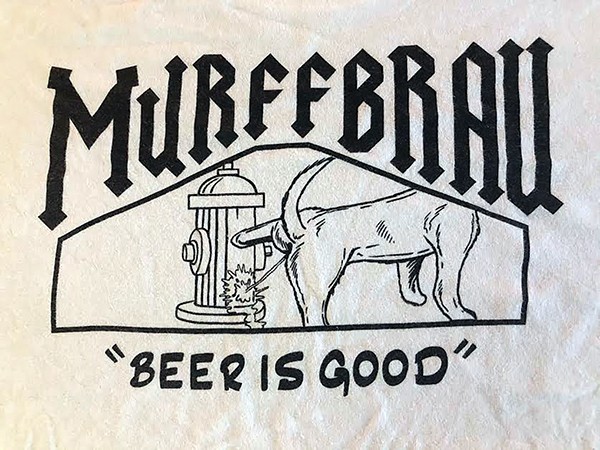
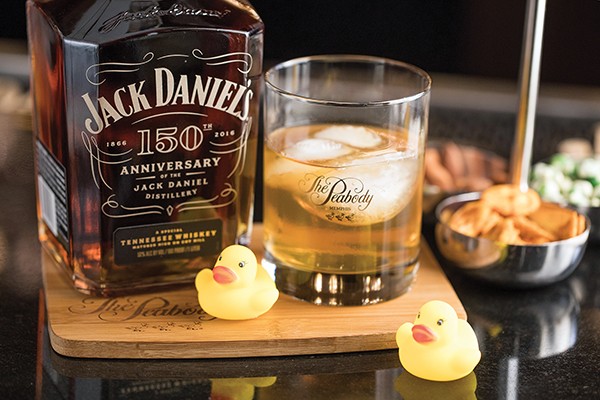 Peabody Memphis
Peabody Memphis 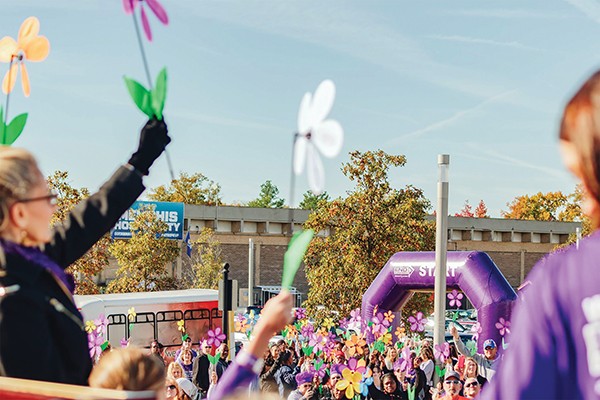 Whitney Shubeck
Whitney Shubeck 

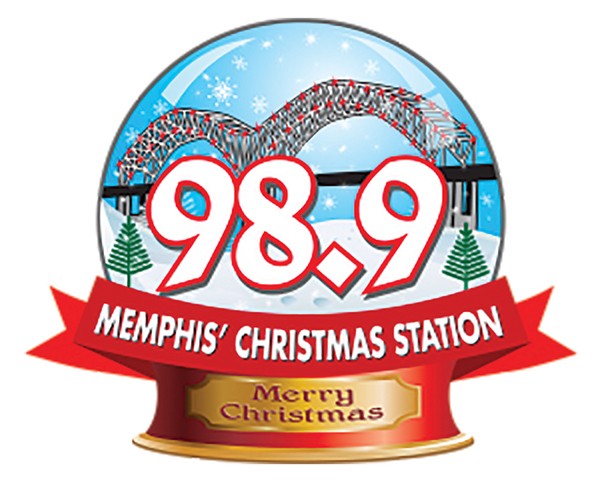
 Photographs by Justin Fox Burks
Photographs by Justin Fox Burks 


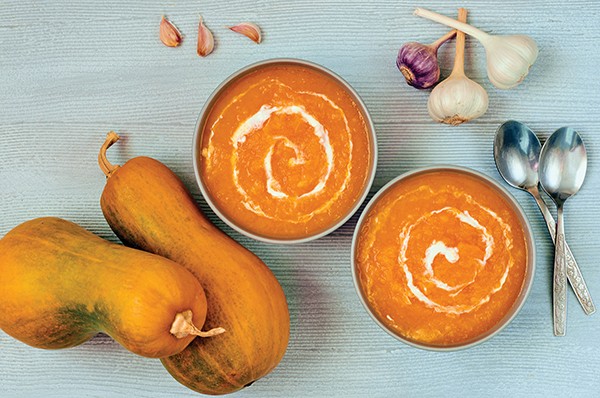
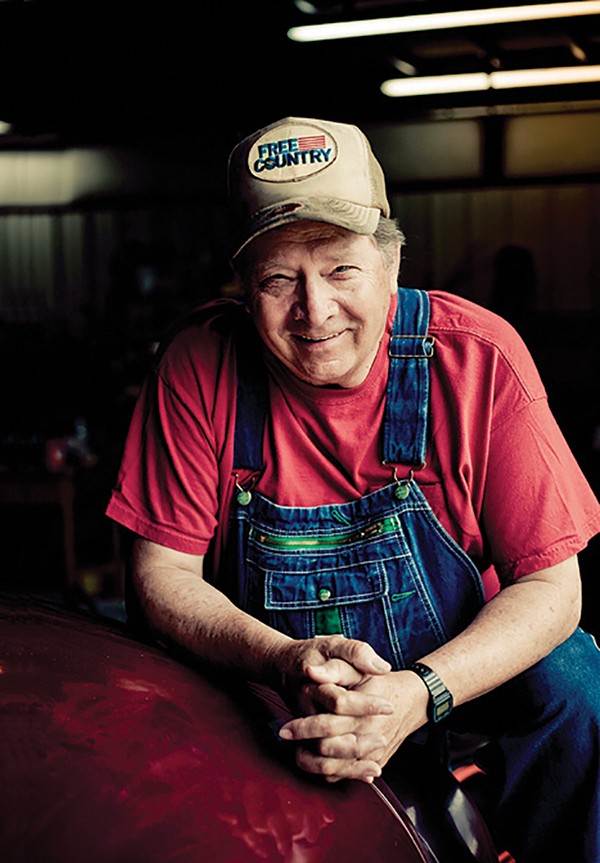
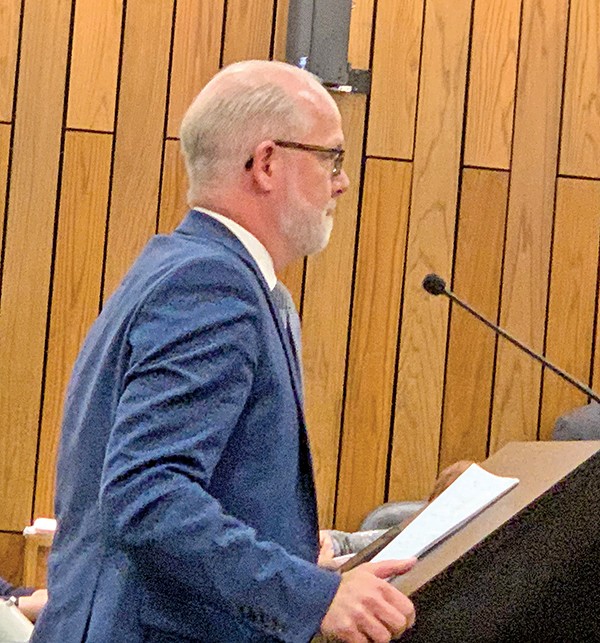 Jackson Baker
Jackson Baker 